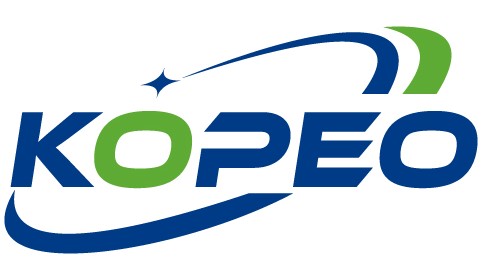
Polyacrylamide
(Total 3 Products)-
Unit Price:700~800USDBrand:kopeoMin. Order:20 metric tonPackaging:plastic drum, round drum, square drum, USA style drum, Europe style drumSupply Ability:30000 Metric Ton/Metric Tons per YearIntroduction Of Polyacrylamide Polyacrylamide (PAM) is a linear polymer with the chemical formula (C3H5NO)n.It is a hard glassy solid at room temperature,and the products include glue, latex and white powder, translucent beads and flakes.Thermal...
-
Unit Price:700~800USDBrand:kopeoMin. Order:20 metric tonPackaging:plastic drum, round drum, square drum, USA style drum, Europe style drumSupply Ability:30000 Metric Ton/Metric Tons per YearThe difference between Polyacrylamide anionic and cationic Polyacrylamide anionic and cationic difference is very big,they are polymer flocculants, anionic and cationic their two different models,they can not be mixed,mixed use will react and lose...
-
Unit Price:700~800USDBrand:kopeoMin. Order:20 metric tonPackaging:plastic drum, round drum, square drum, USA style drum, Europe style drumSupply Ability:30000 Metric Ton/Metric Tons per YearThe role of anionic Polyacrylamide in sewage treatment: Anionic Polyacrylamide is a water-soluble polymer,suitable for higher concentration and positively charged inorganic suspended matter,as well as coarser suspended particles (0.01-1mm) pH value...

Selection of PAM
Polyacrylamide according to ionic properties can be divided into four types of nonionic, anionic, cationic and amphoteric polyacrylamide. According to the molecular weight to be divided into different specifications of molecular weight, ionicity, etc. derived from many models, in the face of the market cluttered specification system, for their own sewage system to select the best polyacrylamide model is indeed difficult, how a few strokes to deal with sewage or sludge polyacrylamide selection of common problems.

1、Understand the source of sludge
Sludge is an inevitable product of sewage treatment, first we should understand the source of sludge, nature, composition and solid content. According to the sludge contains different major components, sludge can be divided into organic sludge and inorganic sludge.
Generally speaking, cationic polyacrylamide is used to deal with organic sludge, anionic polyacrylamide is used to deal with inorganic sludge, it is not easy to use cationic polyacrylamide when alkaline is very strong, and it is not suitable to use anionic polyacrylamide when acidic is very strong, the solid content of the sludge is high, usually the dosage of polyacrylamide is larger.
Generally speaking, cationic polyacrylamide is used to deal with organic sludge, anionic polyacrylamide is used to deal with inorganic sludge, it is not easy to use cationic polyacrylamide when alkaline is very strong, and it is not suitable to use anionic polyacrylamide when acidic is very strong, the solid content of the sludge is high, usually the dosage of polyacrylamide is larger.

2、The ionic degree of polyacrylamide selection
For the sludge to be dewatered, different ionicity flocculants can be screened through small experiments, and the best suitable polyacrylamide is selected, so that the best flocculant effect can be achieved, and the dosage can be minimized, saving costs. Selection of ionicity key to see:
(1) The size of the floc
The size of flocs: too small flocs will affect the speed of drainage, flocs too large flocs will bind more water and reduce the mud cookie degree. The size of floc can be adjusted by choosing the molecular weight of polyacrylamide.
(2) Floc strength (water content)
Strength of flocs: flocs should remain stable and not broken under shear. Increasing the molecular weight of polyacrylamide or choosing suitable molecular structure can help to improve floc stability.
(3) Mixing of polyacrylamide and sludge
Polyacrylamide in a position in the dewatering equipment must be fully reacted with the sludge, flocculation occurs. For this reason, the viscosity of polyacrylamide solution must be appropriate, in the existing equipment conditions can be fully mixed with the sludge, the two mixed uniformly or not, is the key factor for success. Polyacrylamide solution viscosity and its molecular weight and formulation concentration.
(4) Dissolution of polyacrylamide
Dissolve well in order to give full play to flocculation. Previously mentioned polyacrylamide dissolution process is actually the polyacrylamide maturation process, sometimes need to speed up the dissolution rate, which can be considered to improve the concentration of polyacrylamide solution.
(1) The size of the floc
The size of flocs: too small flocs will affect the speed of drainage, flocs too large flocs will bind more water and reduce the mud cookie degree. The size of floc can be adjusted by choosing the molecular weight of polyacrylamide.
(2) Floc strength (water content)
Strength of flocs: flocs should remain stable and not broken under shear. Increasing the molecular weight of polyacrylamide or choosing suitable molecular structure can help to improve floc stability.
(3) Mixing of polyacrylamide and sludge
Polyacrylamide in a position in the dewatering equipment must be fully reacted with the sludge, flocculation occurs. For this reason, the viscosity of polyacrylamide solution must be appropriate, in the existing equipment conditions can be fully mixed with the sludge, the two mixed uniformly or not, is the key factor for success. Polyacrylamide solution viscosity and its molecular weight and formulation concentration.
(4) Dissolution of polyacrylamide
Dissolve well in order to give full play to flocculation. Previously mentioned polyacrylamide dissolution process is actually the polyacrylamide maturation process, sometimes need to speed up the dissolution rate, which can be considered to improve the concentration of polyacrylamide solution.

3、The molecular weight of polyacrylamide selection
The molecular weight of polyacrylamide refers to the length of the molecular chain in the molecule, the molecular weight of polyacrylamide is between 500-18 million, in general, the higher the molecular weight of the polyacrylamide products, the greater the viscosity, however, in the use of the time, not the higher the molecular weight of the product, the better the use of the product, specifically in the use of the actual application of the industry, the quality of the water, the treatment equipment, and other conditions to determine the appropriate molecular weight of polyacrylamide. Specifically in use, according to the actual application industry, water quality, treatment equipment and other conditions, to determine the appropriate molecular weight of polyacrylamide.


